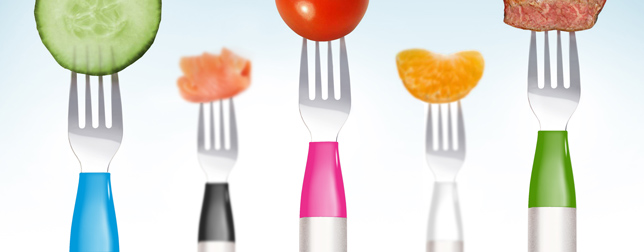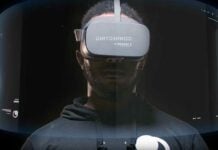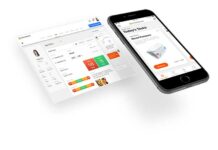You are what you eat. In today’s society many people seem to ignore this fact, with obesity and related welfare diseases all around us. While physical activity can obviously solve parts of the problem food intake and food quality are very important factors to tackle unhealthy habits. Tracking food intake is not easy though, since it often is boring, tiring and offers lots of chances to lie to yourself by entering „wrong“ data (on purpose) into the thousands of apps that you can find on the market right now. Not even speaking of keeping track of what you eat in a manual food diary. That’s why we looked for new devices tracking food intake automatically without you having to worry about numbers, quantities, meals, and cheating the app.
The human wrist rolls in a distinctive pattern during eating. The wrist-worn Bite Counter makes use of this pattern, tracking wrist motion to count bites and estimate calories. It provides real-time feedback on the amount consumed and stores a long-term log. This allows for easy portion control, sustained self-monitoring and feedback during eating instead of only at the end of day. The device can be used to measure consumption during meals and other periods of continuous eating. It has to be turned on at the start and turned off at the end of each eating activity.
Eating too fast leads to poor digestion and easily makes you lose track of the amounts eaten. Slowing down your eating speed is HAPIfork’s goal. HAPIfork by HappyLabs, an electronic fork, tracks your eating habits and alerts you, with the help of indicator lights, when you’re eating too fast. The fork also measures the overall eating time per meal, the amount of ‘fork servings’ taken per minute and intervals between ‘fork servings’.
Going back to ’you are what you eat’ – what about ingredients? This is interesting for weight control as well as for people with certain intolerances or allergies. The Canadian company TellSpec recently launched campaign on Kickstarter for a hand-held consumer device that can analyze the chemical composition of any food in less than 20 seconds, thanks to laser spectroscopy, nanophotonics, and a unique algorithm. For the analysis it beams a low-powered laser at the food, measures the reflected light with a spectrometer, and sends the data via smart phone, computer, or tablet to TellSpec’s servers in the cloud. Those servers use the data to deduce information about your food that is of interest. This information is then displayed on a computer, tablet or smart phone to help intelligently with the decision to buy or eat the food.
Nevertheless, food is great. It makes life beautiful and we shouldn’t worry too much about our choices. We hope to see a lot more solutions for food intake tracking on the market, making the tracking of food intake easy and pleasant, giving a slight hint from time to time – just in case we are overdoing it…















